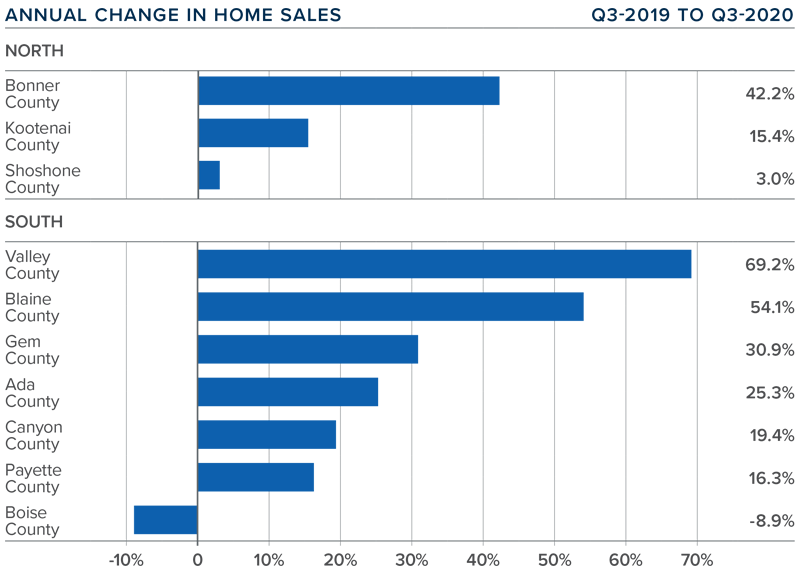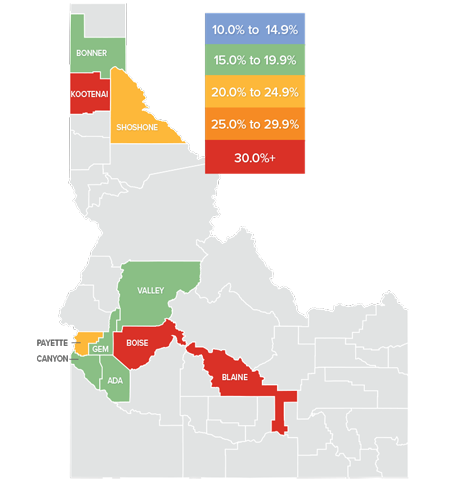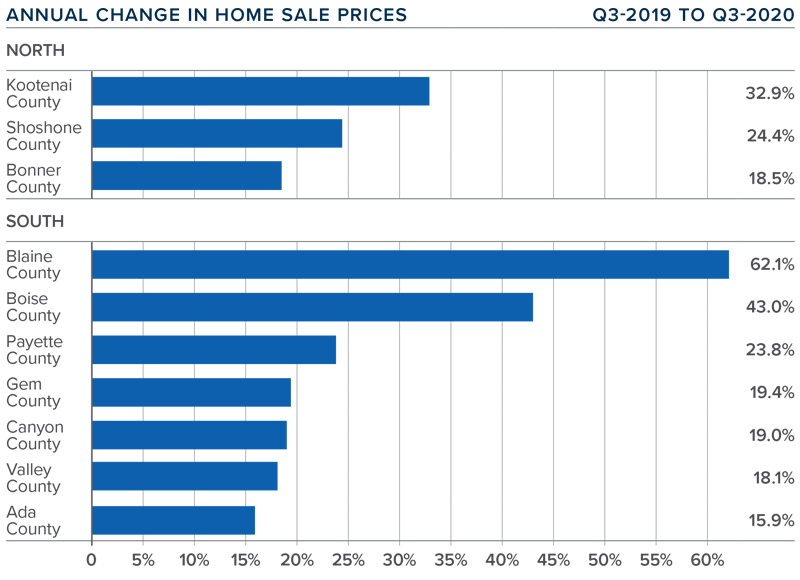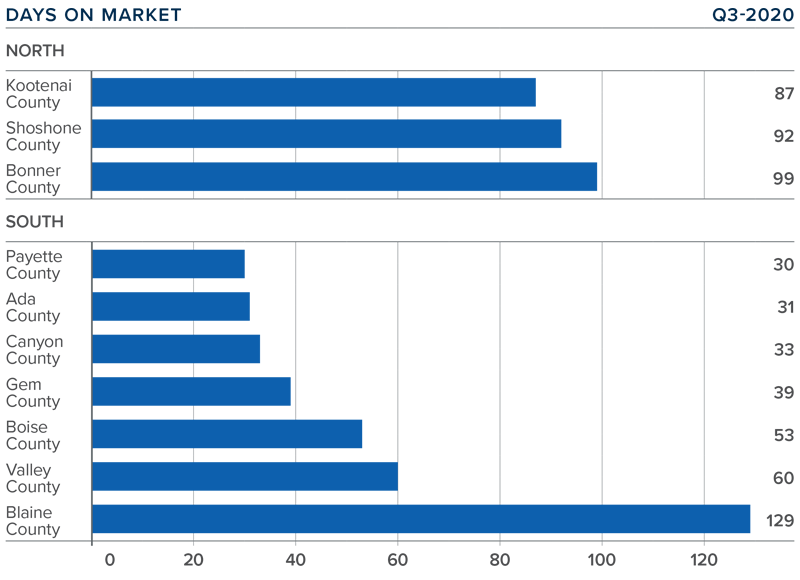The following analysis of select counties of the Idaho real estate market is provided by Windermere Real Estate Chief Economist Matthew Gardner. We hope that this information may assist you with making better-informed real estate decisions. For further information about the housing market in your area, please don’t hesitate to contact your Windermere agent.
ECONOMIC OVERVIEW
Idaho never ceases to amaze me! Along with the rest of the country, its economy was significantly impacted by COVID-19 and it shed 83,100 jobs between February and April. Since that time, the recovery has been palpable. Even though state payrolls contracted 10.8%, it has now recovered 69,500 of the jobs lost, leaving a relatively small shortfall of 13,600 jobs. With this recovery in employment, the unemployment rate, which peaked at 11.8% in April, has pulled back to 4.2%. Though this all sounds remarkably positive, Idaho has seen COVID-19 cases rise again, and this may slow the job recovery that appears to be in place.
HOME SALES
- During the third quarter of 2020, 9,078 homes were sold, representing a very significant increase of 23.5% year-over-year. Sales were also 44.9% higher than in the second quarter of this year.
- In the southern part of the state, sales rose in all but the very small Boise County. The 8.9% drop there represented only seven fewer transactions. Valley County saw significant growth.
- Year-over-year sales growth was positive in all the Northern Idaho counties contained in this report, with significant growth in Bonner County.
- Pending sales were positive relative to the second quarter, suggesting that closings in the final quarter of this year will also rise. Sales across the state are limited only by the lack of homes available to buy.

HOME PRICES
- The average home price in the region rose a significant 24.8% year-over-year to $459,372. Home prices were 18.6% higher than in the second quarter of 2020.
- In Northern Idaho, prices rose most significantly in Kootenai County, though all counties saw double-digit gains. Southern Idaho price growth was equally impressive, with Blaine County standing out.
- Prices rose in all Northern Idaho counties covered by this report. All seven Southern Idaho counties also saw solid price growth.
- Inventory levels remain an issue. The average number of homes for sale was 33% lower than a year ago and down 16.2% compared to the second quarter.

DAYS ON MARKET
- It took an average of 93 days to sell a home in Northern Idaho, and 54 days in the southern part of the state covered by this report.
- The average number of days it took to sell a home in the region dropped one day compared to the third quarter of 2019. It took an average of eight fewer days to sell a home than in the second quarter of this year.
- In Northern Idaho, days on market dropped in Bonner and Kootenai counties, but rose by one day in Shoshone County. In Southern Idaho, market time dropped in four counties, but rose, albeit modestly, in Valley, Gem, and Canyon counties.
- In Southern Idaho, homes sold fastest in Payette and Ada counties. Sales were fastest in Kootenai County in the northern part of the state.

CONCLUSIONS
 This speedometer reflects the state of the region’s real estate market using housing inventory, price gains, home sales, interest rates, and larger economic factors.
This speedometer reflects the state of the region’s real estate market using housing inventory, price gains, home sales, interest rates, and larger economic factors.
Demand for home ownership is significant, and, in my opinion, the number of sales is only limited by the number of homes for sale. The economy is recovering nicely, which, in concert with historically low mortgage rates, is getting a lot of buyers off the fence and searching for homes. With buyer demand far exceeding supply, I am moving the needle more in favor of sellers.
ABOUT MATTHEW GARDNER
 As Chief Economist for Windermere Real Estate, Matthew Gardner is responsible for analyzing and interpreting economic data and its impact on the real estate market on both a local and national level. Matthew has over 30 years of professional experience both in the U.S. and U.K.
As Chief Economist for Windermere Real Estate, Matthew Gardner is responsible for analyzing and interpreting economic data and its impact on the real estate market on both a local and national level. Matthew has over 30 years of professional experience both in the U.S. and U.K.
In addition to his day-to-day responsibilities, Matthew sits on the Washington State Governors Council of Economic Advisors; chairs the Board of Trustees at the Washington Center for Real Estate Research at the University of Washington; and is an Advisory Board Member at the Runstad Center for Real Estate Studies at the University of Washington where he also lectures in real estate economics.
 Facebook
Facebook
 X
X
 Pinterest
Pinterest
 Copy Link
Copy Link



